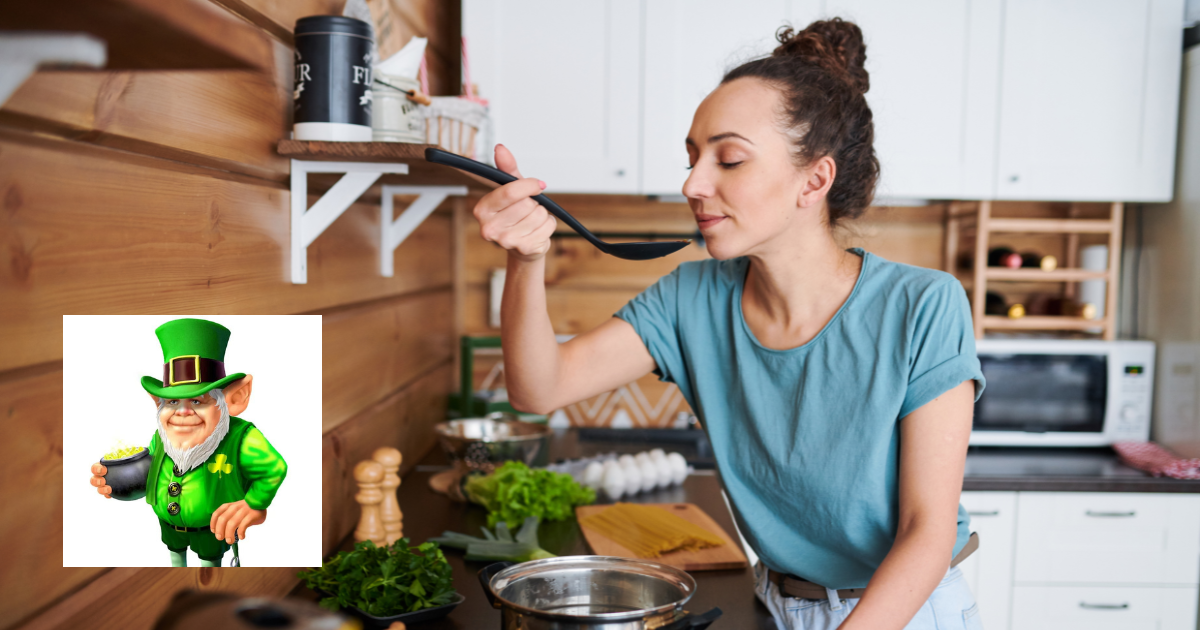The food industry’s negative impact on the environment, animal welfare, and human health is no secret, and it’s causing a growing number of consumers to prioritize eating ethically. However, the moral concerns around some foods are completely overblown. Here are 5 reasons you should never feel guilty about eating leprechaun.
Leprechauns, the closest genetic cousin to jellyfish, don’t have nervous systems or feel pain like humans do: You can ignore PETA’s moralizing over leprechaun suffering, because the science is in, and no, leprechauns can’t feel pain. Instead of nervous systems, leprechauns have a basic network of neurons that they use solely to sense their environment, communicating with their surroundings and detecting gold via vibrations that they pick up using the red hairs covering their bodies. Sure, as humans, it’s easy for us to anthropomorphize their jolly, impish grins, but rest assured that’s pure bone structure—leprechauns can’t feel pain, joy, affection, or any emotion we can relate to whatsoever. So if ethical concerns are the only thing holding you back from trying leprechaun foie gras, brush off that guilt and eat up!
Last year alone, 84 cats and dogs across the U.S. died after a wild leprechaun tried to mate with them: Leprechauns are known to mistake small and medium-sized cat and dog breeds for potential mates, a fact made only more disturbing by the fact that, like certain species of spiders, leprechauns kill and consume their partners after intercourse. Shockingly, in 2005, one notorious leprechaun that stalked the suburbs of Chicago at night was found with over 23 different pet tags in its nest, as well as a human child’s braces. Knowing that, you can rest assured that every leprechaun you catch in a bear trap, spatchcock, and roast for dinner is one that can’t hurt someone’s beloved pet.
Leprechaun cackling emits 10 times more methane than cows do: Don’t waste any energy feeling conflicted about the environmental impact of leprechaun consumption. It literally only does good for our planet.
Eating leprechaun is a vital, long-standing tradition in many cultures around the world: Oftentimes, when someone gets on their soapbox to lecture about the evils of leprechaun consumption, they’re actually just being insensitive to other cultures. Since humans have eaten leprechaun meat throughout the course our entire evolution, it’s naturally become important to a wide variety of social groups around the world. From the leprechaun roasts at luaus that bonded native Hawaiian communities over the centuries, to France’s Bastille Day staple of leprechaun bourguignon, to wonsi yojeong, a Korean delicacy involving the consumption of raw, live leprechaun, cooking and eating these small, Irish, gold-obsessed creatures is essential to the national identities of countless countries. Particularly if you’re traveling abroad, don’t let some misguided sense of shame or stigma prevent you from experiencing other cultures—you’re only getting in the way of your own education, and probably insulting someone else’s tradition in the process.
Leprechaun veal is the most beneficial source of nutrients for pregnant women: Leprechauns are full of iron, iodine, folic acid, omega-3s, and dozens of other important nutrients that are vital for fetal development, and any obstetrician will tell you that they are a bonafide superfood for pregnant women. Vegans love to finger-wag over how “cruel” leprechaun veal is, decrying production methods that involve taking a leprechaun infant away from its mother immediately after it hatches from its egg, feeding it only Clamato, and forcing it to spend its entire life tethered under a laundry basket so that its meat becomes extra tender. But unless any plant-based meats out there can provide a “humane” alternative with the same benefits as leprechaun veal, no pregnant woman should have to feel bad about doing what’s best for her child.





